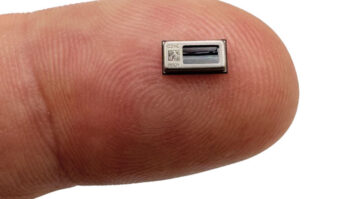CES 2016 marked a high point for the overall presence as well as conspicuous visibility of the world’s top auto makers at the world’s largest technology event.
The auto industry has embraced the idea of the autonomous vehicle and after years of promise the rest of the consumer world seems to have caught on too. Our collective driverless future is bright and with it comes promised a whole host of related problems solved.
In keynotes and press conferences we have been told tales of a future sharing economy in which fleets of auto-piloted cars will be at our disposal when needed. Smart highways will eliminate traffic and inner-city congestion, and human error, the bane of auto casualty statistics, will be relegated to the back seat, comfortably and surrounded by screens.
Years of promise, though, seems to have brought a new urgency, given this year’s show. Every major auto maker attended, many gave keynotes. The LVCC’s North Hall was stacked with concept vehicles and hundreds of announcements from third-party suppliers of vital technologies such as sensors, artificial intelligence, Cloud computing and 3D positioning were made.
General Motors CEO Mary Barra declared in her keynote address: “The auto industry will change more in the next five to 10 years than it has in the past 50.”
Ford’s CEO Mark Fields concurred. “I predict that 2016 will be a revolutionary year in the automotive industry,” he asserted at Ford’s press conference, before announcing that his company will triple its autonomous vehicle test fleet to 30 this year.
The auto makers’ efforts are as much strategic shuffling amongst themselves as a collective defensive front among pure-play technology companies such as Google, Tesla and even Apple, which are all approaching the autonomous vehicle as a natural extension of their brands.
So where are we now?
Opinions vary greatly, but there has been some awfully optimistic pronouncing among all this recent activity. Days after CES ended, President Obama and Transportation Secretary Anthony Foxx announced a 10-year, $4 billion plan to fund pilot projects that would accelerate the adoption of self-driving autonomous vehicles. The goal is a national regulatory framework for testing and deploying pilotless vehicles in “designated corridors” around the country
“We are on the cusp of a new era in automotive technology with enormous potential to save lives, reduce greenhouse gas emissions, and transform mobility for the American people,” Secretary Foxx said in a statement. “Today’s actions and those we will pursue in the coming months will provide the foundation and the path forward for manufacturers, state officials and consumers to use new technologies and achieve their full safety potential.”
Joining Foxx at the announcement were execs from Ford, GM, Google, Tesla and Volvo.
A major priority of the government’s role is the acknowledgement by many that the vast majority of car crashes are caused by human error. The National Highway Transportation Safety Administration (NHTSA) said: “NHTSA is using all of its available tools to accelerate the deployment of technologies that can eliminate 94 percent of fatal crashes involving human error. We will work with state partners toward creating a consistent national policy on these innovations, provide options now and into the future for manufacturers seeking to deploy autonomous vehicles, and keep our safety mission paramount at every stage.”
Just two weeks earlier, GM invested $500 million in ride-sharing app Lyft to partner on automated vehicle technology.
GM and Lyft are planning to work together to develop a new network of self driving cars as more municipalities are essentially adopting transportation network companies, such as Uber and Lyft, as essential partners in their transportation networks, especially as populations grow.
The results are clear. Over the course of five years, ride-sharing services have expanded rapidly, moving these services from the periphery of transportation options to a mainstream means of getting around many American cities.
So what’s holding us back?
Autonomous vehicles could not be more different than regular piloted cars, and the auto industry has spent years transitioning their strategies and structures to accommodate that.
First and foremost, driverless vehicles are essentially supercomputers with wheels. The amount of code written to pilot a vehicle is mind-boggling, and when you add in all of the other technological demands, it becomes clear that nothing short of reinvention is needed by the major auto makers.
While Google, Apple and Tesla were founded as technology companies with computer coding firepower baked in, the GMs and Fords of the world had to begin their initiatives from scratch.
Besides computing power, there are some key technologies that sit at the heart of every autonomous vehicle. Enter the 115 or so vehicle technology companies who flocked to CES for a chance to partner with the auto makers. It was by far the largest presence by auto technology ever at a CES and is indicative of the money and effort that is being invested in our driverless futures.
Google said last year it expected to market self-driving models by 2020. Just this week, Nevada granted a driver’s license to a self-driving vehicle (on a test basis for now.) As many as 29 states have begin to legislate future rollouts of autonomous cars and Elon Musk said that within two years, Tesla will be ready to bring four different auto-piloted models to market.
The Key Technologies
In a nutshell, every pilotless car has to emulate the awareness and intelligence of having an actual human driver. The technologies needed break down like this:
Sensors: When meshed with software, sensors allow the vehicle to have situational awareness, that is knowing where it is, what’s around it and how everything is behaving.
Most often, sensors are combined with radar systems, lasers and complex camera arrays to essentially act as the eyes and ears of the vehicle.
Artificial intelligence and positioning: While defined by many differently, artificial intelligence is primarily the ability to detect and recognize objects and scenarios and prioritize the appropriate action that must be taken.
In the case of pilotless vehicles, a complex network of robust systems is blended to do very specific tasks, such as recognizing traffic, following roads and determining when evasive action must be taken.
It’s much more complex than it sounds as the car’s system needs to be able to distinguish between a paper bag, a child, an animal and a truck, for instance. But in the end, this is a problem that will be solved with greater and greater computing power and early players such as Volvo and Mercedes-Benz have demonstrated very sophisticated systems,
Cloud computing: Anyone who has used the popular navigation app Waze can tell you how important connectivity is to traffic detection. When all the vehicles on the road are centrally connected and sharing data, efficiencies in such areas as navigation, speed control and traffic avoidance come built in to the system. A central traffic management system can redirect and load balance traffic across the all available roads. It could even close a road or open up extra lanes in a certain direction.
The good news is that our wireless data network is robust enough already to handle this kind of load.
According to Audi, Cloud connectivity will also make self-driving cars get smarter over time. Any data collected and reported by the vehicle can be instantly reported back and analyzed by an Audi network of supercomputers, with input sent back to the car, possible “teaching” the vehicle what to do under like conditions at a later date.
Smart road infrastructure: The final piece of a national autonomous driving fleet would be the development of a highway system that interacts with the vehicles on it, regulating distance between, speed and lane changing. At maximum efficiency, cars could travel much closer to each other without fear of collision. Ultimately, superhighways will act similar to cross-country train tracks, guiding miles-long chains of vehicles along pre planned routes at speeds monitored in real-time for maximum safety.
All of the technologies needed exist in some form today and the acceleration of computing power, the falling prices of sensors and the growth of Cloud computing should accelerate the growth of autonomous vehicles greatly.













